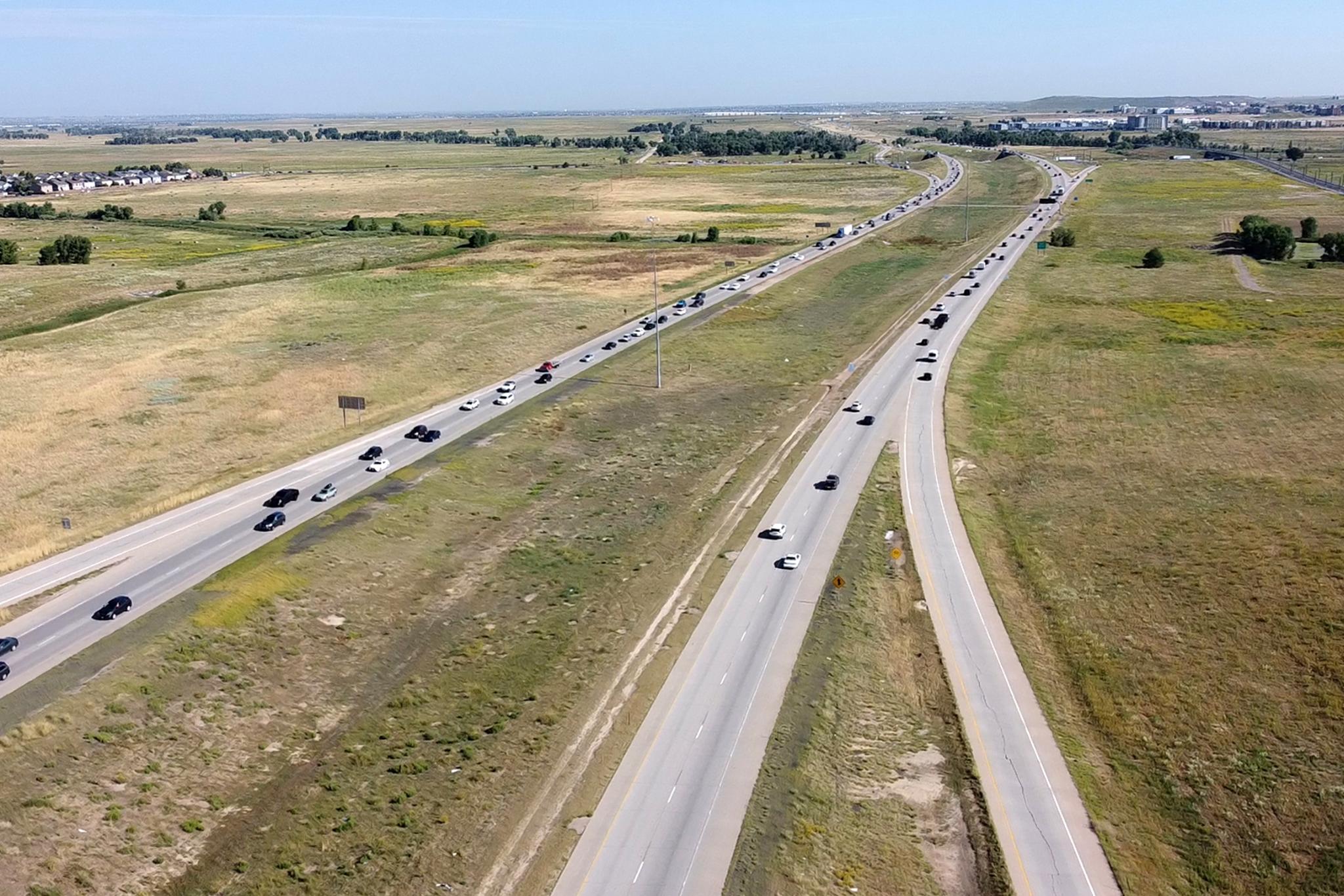Denver International Airport can spend a $5 million grant from the state to study the potential of widening Peña Boulevard, the two-lane highway to and from the airport that often faces dense traffic during rush hour. A divided City Council voted seven to six to approve a bill funding the study Monday.
The airport’s interest in widening Peña comes as airport passenger traffic grows quickly, along with residential and commercial development in Montbello and Green Valley Ranch.
In February, the airport released a report considering five options for the road: adding a bus-only lane, adding a “managed lane” either for carpools or a toll lane, building a frontage road for local traffic off the highway, building a collector road to separate airport express traffic and local traffic, or doing nothing at all.
But some Councilmembers and climate advocates want the airport to focus on disincentivizing car trips, increasing A line service and conducting a study considering other options that would not involve widening the highway. Some studies have shown that highway widenings ultimately lead to more traffic down the line by increasing demand on a given road. Meanwhile, the state has moved away from widening highways in recent years.
“We’ve got to be laying out a road map for a more sustainable future,” said Councilmember Paul Kashmann, who voted against the funding along with Councilmembers Shontel Lewis, Serena Gonzales-Gutierrez, Chris Hinds, Sarah Parady and Darrell Watson. “The current plan simply lacks any degree of imagination.”
Denver International Airport CEO Phil Washington sent a letter of support for the study to City Council last week. He said that the airport is committed to multimodal, non-car transportation options, but that the airport also has to address Peña. The study would also include looking into things like bike lockers and other infrastructure improvements and programs that would disincentive single car usage.
“All modes of transit are important to DEN,” he wrote.
Supporters of the study say it’s necessary for residents in the area and travelers who do not live near the A Line.
Councilmember Stacie Gilmore represents District 11 which includes Montbello and Green Valley Ranch, the neighborhoods directly adjacent to the airport. She framed the conversation as an environmental justice issue, as those neighborhoods lack the same infrastructure and transit network as elsewhere in the city.
“People tell me every day that we need to address Peña… It affects our day-to-day life so negatively in District 11,” she said. “We deserve better than having no action on this.”
Councilmember Kevin Flynn advocated for a “yes-and” approach that would move forward with studying traffic management options on Peña Boulevard. He said it would not preclude pushing for A Line improvements as well and that solely promoting A Line travel is unrealistic given how many people live far from A Line stations and the lack of a broader transit network city- and statewide that could quickly connect people to the airport line.
“The A Line is great, I love it,” he said. “But I can’t ask everyone in the Denver metro area or the state of Colorado to drive to an A Line station to get to the airport.”
In a letter to City Council, the Denver Bicycle Lobby wrote that the airport should better invest in buses to stations and park-and-rides along with A-Line service to discourage cars on Peña Boulevard. The letter expressed concerns about the airport potentially spending nearly $300 million on expanding the road down the line.
“Investing in more reliable and affordable train service would free up capacity on Pena Blvd for those who do need to drive,” Bike Lobby members David Mintzer and June Churchill wrote. “Doubling down on a wider highway will instead just increase automobile dependency and lead to more congestion in 5-10 years.”













